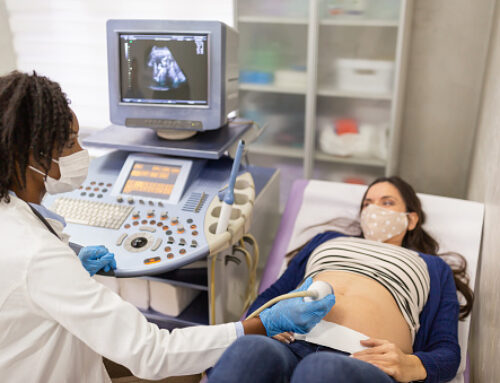Ultrasound technology has come a long way since its inception in the 1950s. Today, we have access to 3D and 4D ultrasounds that provide us with detailed images of the developing fetus in the womb. These images are not only fascinating to look at, but they also play an important role in prenatal care.
So, what is the science behind 3D/4D ultrasounds? Let’s take a closer look.
How do ultrasounds work?
Ultrasound uses high-frequency sound waves to create images of internal organs and structures within the body. A transducer, which is a handheld device that emits sound waves, is placed on the skin over the area being examined. The sound waves bounce off internal structures and are then picked up by the transducer and converted into an image on a computer screen.
In obstetrics, ultrasound is used to monitor fetal development and detect any abnormalities or complications during pregnancy. Traditional 2D ultrasounds provide two-dimensional images of the fetus, while 3D/4D ultrasounds provide three-dimensional images that show depth and detail.
What’s the difference between 3D and 4D ultrasounds?
3D ultrasound creates static three-dimensional images of the fetus by taking multiple 2D images from different angles and piecing them together. This allows for a more detailed view of facial features, limbs, and other structures.
4D ultrasound takes this technology one step further by adding motion to the images. This means that you can see real-time movements of your baby in utero, such as yawning or sucking their thumb.

Are there any risks associated with 3D/4D ultrasounds?
The use of ultrasound during pregnancy has been deemed safe by medical professionals for decades. However, some experts caution against using non-medical facilities that offer 3D/4D ultrasounds for entertainment purposes. These facilities may not have trained medical professionals on staff, and the prolonged exposure to ultrasound waves could potentially harm the developing fetus.
It’s important to remember that 3D/4D ultrasounds should only be performed by a licensed medical professional for medical purposes.
In conclusion, 3D/4D ultrasounds provide a fascinating glimpse into the development of the fetus in utero. While they are not necessary for routine prenatal care, they can be useful in detecting certain abnormalities or complications. As with any medical procedure, it’s important to consult with your healthcare provider before undergoing an ultrasound.
Should You Get a 3D/4D Ultrasound?
While you should always consult your doctor before making any medical decisions regarding your pregnancy, it’s hard to ignore the benefits of 3D/4D ultrasounds. In addition to the practical and medical benefits, many women choose 3D/4D ultrasounds because they provide a clear determination of their baby’s gender, and more detailed, lifelike images of their beloved child. 3D/4D ultrasounds can help you start bonding with your baby on a deeper level before they are born, which can enrich your pregnancy journey.





